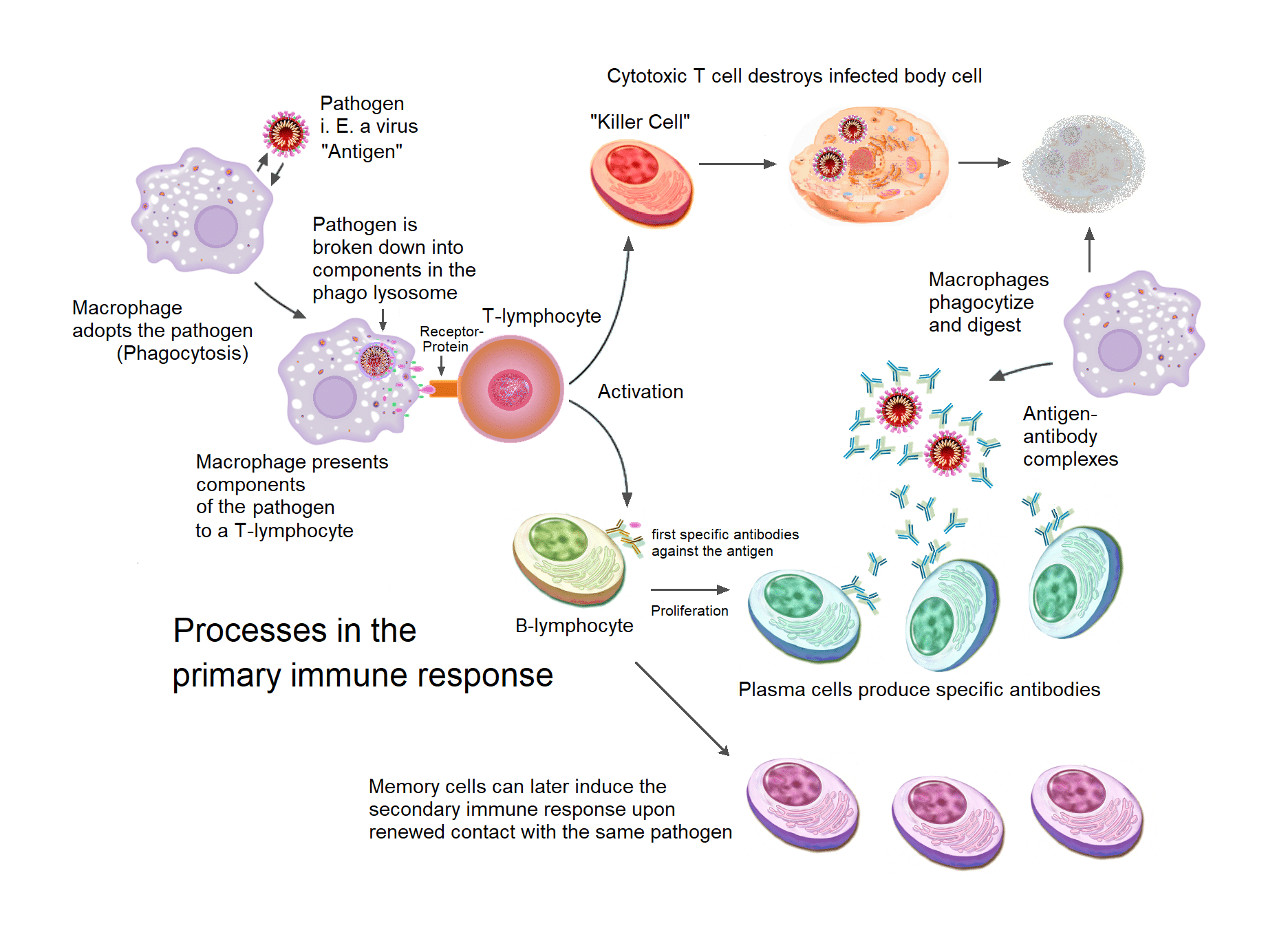In the intricate ballet of biological systems, the immune response stands as a vigilant guardian, akin to an ever-watchful sentinel. This sophisticated mechanism orchestrates a multifaceted defense against a plethora of external invaders—primarily antigens—that threaten the sanctity of our health. To delve into the fascinating interplay between antigens and the immune system is to explore the very essence of our body’s ability to distinguish friend from foe.
Antigens, the culprits behind infections and diseases, can be likened to unwelcome guests at a grand banquet. They come in various forms, including bacteria, viruses, fungi, and even allergens. Just as a host may prepare for unexpected visitors, our immune system is perpetually on alert, ready to spring into action the moment it detects the presence of these intruders. The immune response is not simply a reaction but a well-choreographed performance involving a cast of characters—from various types of immune cells to antibodies.
At the heart of this biological theatre is the recognition of antigens. Antigens possess unique structures known as epitopes, which act like name tags, informing the immune system of their identity. These epitopes are typically proteins or polysaccharides found on the surface of pathogens. When an antigen enters the body, it is akin to a stranger wandering into a tightly-knit community. Antigen-presenting cells (APCs), such as dendritic cells and macrophages, play the role of vigilant sentinels. They encounter antigens and capture them, swiftly processing and presenting fragments on their surfaces, allowing other immune cells to recognize these intruders.
Once an antigen is presented to T-cells, the story truly begins to unfold. T-cells can be compared to specialized detectives, each trained to recognize specific criminal insignias. There are two main types of T-cells involved in this process: Helper T-cells (CD4+) and Cytotoxic T-cells (CD8+). The Helper T-cells activate and regulate the immune response, releasing signaling molecules known as cytokines. This is akin to a detective calling for backup. In contrast, Cytotoxic T-cells directly target and destroy infected cells, functioning like a responsive tactical unit swiftly neutralizing threats.
While T-cells play a crucial role in the cellular response to antigens, the humoral immune response is primarily mediated by B-cells. These cells can be viewed as the specialized artisans of the immune system. Upon their activation—generally prompted by interaction with an antigen and signals from Helper T-cells—B-cells differentiate into plasma cells, which then produce antibodies. Antibodies, the elegant proteins designed to bind specifically to antigens, are akin to personalized arrows fired precisely at the heart of an invading pathogen.
What makes this process extraordinarily captivating is the sheer specificity and memory involved. When B-cells and T-cells are first exposed to an antigen, they undergo a phase of clonal expansion, creating a wide array of cells tailored to future encounters with the same pathogen. This is reminiscent of strategically training troop reinforcements, ensuring that the next time the unwanted guest appears at the door, the immune system has an army ready, waiting, and equipped to respond.
Furthermore, memory cells are forged during this initial immune response. Upon the resolution of an infection, some of the activated B-cells and T-cells do not simply disband. Instead, they remain dormant (memory B-cells and memory T-cells) in the body, standing ready for future attacks. This is what equips the immune system with an advantageous edge, allowing it to mount a quicker and more potent response during subsequent exposures to the same antigen. Hence, the immune system embodies not only reaction but also learning—an adaptive entity designed by nature to improve through experience.
The intriguing nature of antigens extending beyond pathogens brings us to the realm of autoimmunity. Here lies an enigma; sometimes, the immune system mistakenly identifies self-antigens—our body’s own molecules—as foreign. This misidentification can lead to autoimmune diseases, where the immune system inadvertently launches an offensive against its own tissues, causing harm rather than protection. It’s similar to a well-meaning but misconstrued host that sets traps for friends, believing them to be foes—an error with often grave consequences.
Moreover, the immune response is influenced by numerous factors, including genetics, environment, and age. Our genetic makeup can predispose us to certain immunological responses, while exposure to different pathogens can shape our immune system’s repertoire. The environmental factors we encounter—such as nutrition, stress, and hygiene—further interplay with our immune function, showcasing the complexity of our biological landscape.
In the modern era, the interplay between antigens and the immune system has garnered significant attention in the field of immunotherapy and vaccine development. These innovations aim to harness and amplify the body’s natural defense mechanisms. Vaccines work on the principle of priming the immune system against specific antigens, preparing the sentinel forces in advance and equipping the body for any future encounters. Just as a wise host prepares for an anticipated reunion with potentially troublesome guests, vaccines enable the immune system to learn and bolster defenses proactively.
In conclusion, the relationship between antigens and the immune response is a complex and dynamic interplay, resembling a captivating narrative filled with intrigue, adaptation, and resilience. By understanding how our immune system interacts with these external molecules, we gain insight not only into the defense mechanisms that protect our body but also into the endless possibilities for enhancing health in an ever-evolving landscape of biological challenges. As we continue to unravel the secrets of this remarkable system, we stand on the precipice of new horizons in medicine, forever guided by the profound wisdom of our immune system—a vigilant sentinel against the onslaught of fate.
